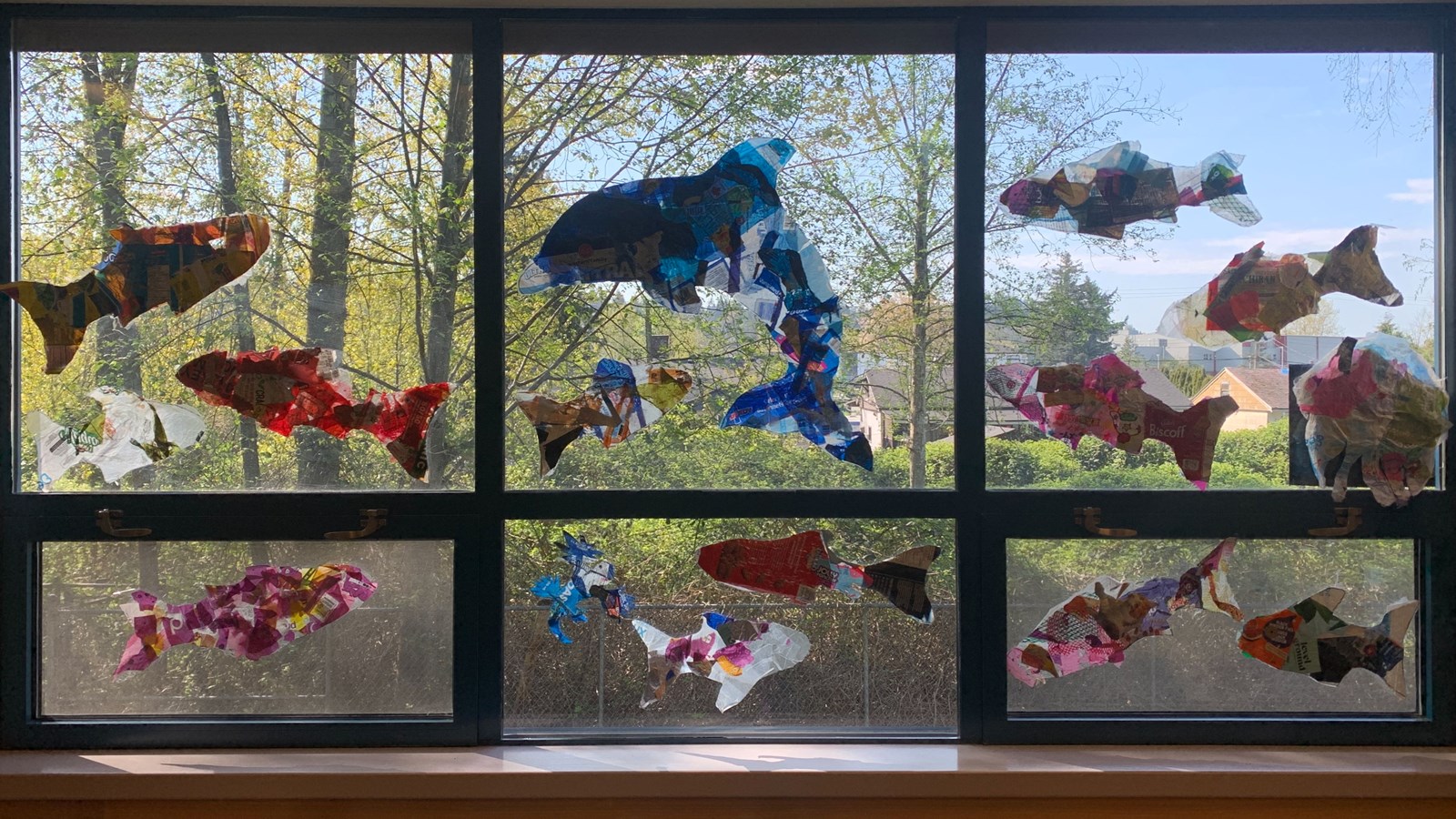Bridgeview Elementary students fuse plastic trash into fantastic art for Earth Day!
 The windows of Suzanna Wright's classroom at Bridgeview Elementary are adorned with artwork made from soft plastics for Earth Day. Wright's Grade 6 and 7 students recently learned about plastic fusing as a way to repurpose hard-to-recycle plastics and keep them out of landfills and the ocean.
The windows of Suzanna Wright's classroom at Bridgeview Elementary are adorned with artwork made from soft plastics for Earth Day. Wright's Grade 6 and 7 students recently learned about plastic fusing as a way to repurpose hard-to-recycle plastics and keep them out of landfills and the ocean.
Grade 6 and 7 students at Bridgeview Elementary are trying something new with hard-to-recycle plastics, repurposing them as artwork through “plastic fusing” while recognizing Earth Day.
The annual Earth Day campaign, now in its 55th year, is an opportunity for citizens around the world to discover and reflect upon how they can help preserve the planet, its environments and its ecosystems. For ADST (Applied Design, Skills & Technologies) teacher Suzanna Wright, finding a new way to ensure certain plastics don’t end up in landfills or the ocean was a task she’d been trying to tackle for some time before this year’s Earth Day came around.
“I’ve been wanting to do some kind of Earth Day project for awhile, using materials that already exist –something that is free that would otherwise be garbage or is usually treated as garbage,” said Wright. “I’ve been collecting inspiration here and there, and I saw this artwork at the airport that was these fish that were made out of soft plastic packaging, but that artist had sewn it together.
“Then I learned about plastic fusing, which is when you take soft plastics and iron them together. I thought surely that must be really stinky, but I tried it and I found it to be quite fun and addictive, and it lit up the light bulb.”
While hard plastics like pop bottles are easily recyclable (and worth getting your deposit back), Wright said soft plastics like plastic bags, potato chip packaging and vegetable nets often require a separate trip to a recycling depot to dispose of properly. Plastic fusing works with many soft plastics and is just one way to prevent them from ending up in the garbage.
Wright said the students have taken to the project, bringing in their own household plastics and learning how to use an iron safely, including by ironing on pieces of parchment paper instead of directly on the plastic.
“My angle with the ADST curriculum is that they’re learning how to use materials that minimize waste and learn how to use another tool safely,” she said. “I like giving them a little bit of responsibility to use things safely and hopefully make something beautiful in the end with what would otherwise be garbage.
“What’s really fun about it for students is it’s very experimental and quickly gratifying – it doesn’t take long to stick two pieces together or six pieces together. And if something doesn’t stick, it’s okay, you just put it aside and try something new.”
Wright also uses the project as an opportunity to instill environmental awareness in the students, explaining how plastics end up in the ocean and impact sea creatures. She hopes Earth Day projects like this will inspire them to make choices that are beneficial to the environment, whether that’s repurposing plastics into art or proper disposal.
“We want to get students thinking of what would encourage people to actually recycle more,” she said. “There’s not much motivation for most people to make a separate trip to properly recycle them – maybe there should be a deposit on them too.”

